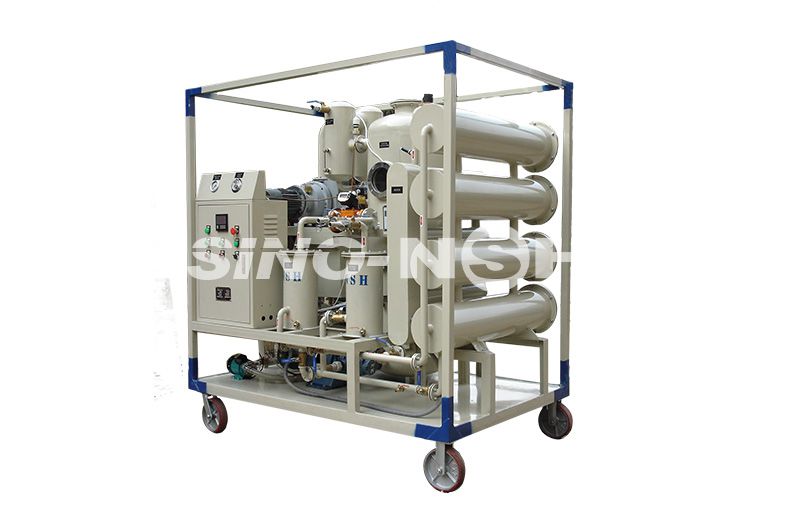Transformer waste oil recycling involves processes to treat and reuse oil that has been used in transformers, which often contains impurities such as metals, moisture, and chemical degradation products. Recycling transformer oil helps reduce environmental impact, conserve resources, and ensure that the oil can be safely reused or disposed of.

There are several steps and methods involved in transformer waste oil recycling:
1. Initial Oil Inspection
- Before recycling, the waste oil is inspected for contaminants, such as dirt, water, oxidation products, and heavy metals (like PCB contamination).
- Depending on the contamination level and type, the recycling process may involve different techniques.
2. Filtration
- Filtration is the first step to remove solid contaminants like dirt, carbon particles, and metallic debris from the oil.
- High-efficiency filters are used to remove particles in the micrometer and nanometer size range.
- Coalescing filters are used to separate free water or oil-water emulsions.
3. Water Removal
- Water content in transformer oil can be removed using several methods:
- Vacuum Dehydration: The oil is heated in a vacuum chamber, which reduces the boiling point of water, causing it to evaporate.
- Coalescing: Special filters or separators are used to combine small water droplets into larger ones, which can then be drained off.
- Centrifugation: This method uses centrifugal force to separate water and solid contaminants from the oil.
4. Degassing
- Degassing removes dissolved gases (like hydrogen, methane, and carbon dioxide) from the transformer oil. These gases can accumulate due to arcing or high temperatures in the transformer.
- The oil is exposed to a vacuum or passed through a gas-extraction system to remove the dissolved gases.
5. Deacidification and Neutralization
- Acid formation in the transformer oil can occur over time, especially due to oxidation or the breakdown of insulating materials.
- Neutralizing agents (such as alkaline substances) are added to neutralize acids and bring the pH of the oil to a safe level. This step can also help remove dissolved sulfur compounds.
6. Polishing and Chemical Treatment
- Activated Carbon Adsorption: The oil may be passed through activated carbon to remove dissolved organic impurities, including breakdown products, odor, and color.
- Clay Treatment: Special clays can be used to adsorb remaining contaminants such as oxidation products and to improve the color of the oil.
7. PCB (Polychlorinated Biphenyl) Removal (if necessary)
- If the transformer oil is contaminated with PCBs (common in older transformers), it requires specialized treatment.
- The methods include:
- Chemical treatment using agents that break down PCBs.
- High-temperature incineration for safe disposal of PCB-laden oil.
- Electrochemical or photocatalytic oxidation techniques may also be employed in certain cases.
8. Vacuum and Heat Treatment (for Re-refining)
- Re-refining the oil involves subjecting the oil to a combination of heat and vacuum to remove volatile contaminants, such as lighter hydrocarbons, that may have accumulated over time.
- This process helps restore the oil’s insulating properties and improve its color and clarity.
9. Blending and Additives
- After all contaminants are removed, the oil may be blended with fresh oil or additives to restore or enhance its properties.
- Additives might include anti-oxidants (to prevent future oxidation), anti-wear agents, and rust inhibitors.
10. Quality Control and Testing
- After the oil is purified and reprocessed, it is subjected to several quality control tests to ensure that it meets the necessary specifications.
- Tests include:
- Dielectric strength testing (insulation resistance).
- Viscosity (to ensure proper flow).
- Moisture and gas content (to ensure it's free of contaminants).
- Acidity levels (to ensure it's neutralized).
- Color and clarity (aesthetics and indication of contamination).
11. Final Processing and Reuse
- Once the oil has passed quality control, it can be reused in transformers or sold as recycled oil, depending on its condition and the standards it meets.
- If the oil cannot be reconditioned, it is disposed of safely by authorized disposal companies or through incineration to avoid environmental harm.
Methods Used in Transformer Oil Recycling:
- Filtration and Degassing Systems
- Vacuum Dehydration
- Activated Carbon Adsorption
- Centrifugation and Coalescing Filters
- Clay and Chemical Treatment
- High-Temperature Re-refining
Environmental Considerations
- Transformer oil recycling is important because it reduces the environmental impact of disposing of waste oil, particularly when it contains harmful substances like PCBs.
- Proper recycling can minimize the risk of soil and water contamination, as used transformer oil often contains potentially toxic and hazardous substances.
Transformer waste oil recycling involves a combination of filtration, dehydration, chemical treatment, and specialized methods for removing contaminants like PCBs. When done correctly, it can help to reuse the oil safely in transformers, contributing to both cost savings and environmental protection.

